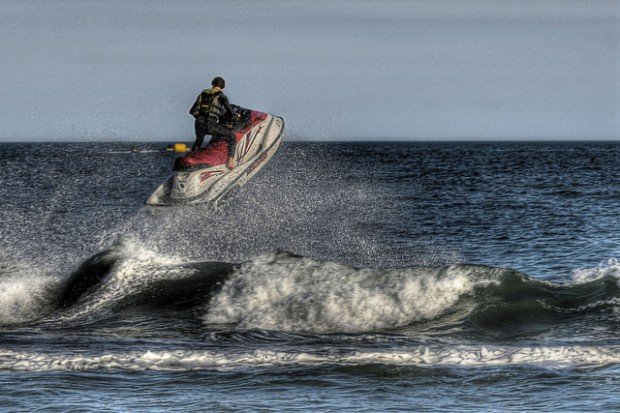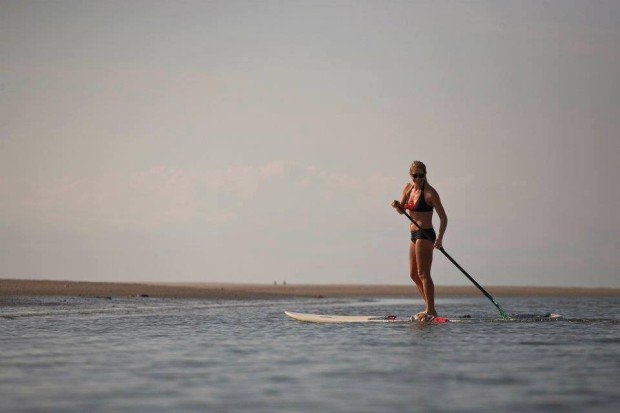Common Water Sports Injuries and How to Prevent Them
There are few activities more fun than frolicking about on the water during a hot summer’s day. Although simply splashing about or swimming may be enough for some, others will be drawn towards more extreme activities.
In general, the higher the level of adrenaline involved in participating in a particular water sport, the greater the risk of injury. The presence of water will always add an additional element of danger as accidents that might be quite nasty on dry land could have far more serious consequences, so it’s always best to be cautious, especially when trying something new.
Whitewater rafting
It’s the ultimate adrenaline rush but spending time in actual whitewater – the designation given to class 3-4 rapids – means your body is likely to be bashed around on the rocks. Although this is half the fun, the sudden movements and changes of direction can lead to sprains in the neck and even cause whiplash-type injuries.
The best way to prevent such injuries during this activity is to ensure you only take on a course that is as challenging as your level of experience dictates. If you do find yourself suffering from soreness in the neck or back in the aftermath of a run, it’s important to use cold rather than hot to bring the swelling down. If the discomfort persists for more than a day or two, visit a health professional as there may be a more serious underlying injury.
Water Skiing
The most common injuries suffered during this activity are to the ankles as they are attached to your ski and experience the greatest forces when you fall over. If you want to minimize the chances of hurting yourself, start out slow and steady. Before you start, you may want to do exercises to build up your leg and ankle strength to provide you with greater stability once you get out onto the water.
Jet Skiing
When you fall from a jet ski, you run the risk of striking your head or other parts of your body against the equipment itself. Additionally, you can suffer the kind of neck sprains and whiplash-type injuries seen in white water rafting. Never rider at speeds greater than you are comfortable with, especially on windy days, and be especially cautious when crossing the wake of a motorboat.
If you do find yourself suffering from an injury or any kind of discomfort, one of the most important things you can do is allow yourself to fully heal before you return to the sport. Continuing to participate in even a gentle watersport while you have a minor injury is likely to prevent you from performing at your best and increase the chances of the injury becoming more serious.
Paddleboarding
Paddleboarding is one of the safer watersports activities you can take part in, but you still need to be cautious and develop the proper technique. To prevent paddleboarding injuries, it’s essential to think of your hands as hooks rather than vices. Grasping your paddle too tightly will put excess pressure on your forearms and in turn on your wrists and elbows which can lead to stiffness or soreness after a day out on the water.
Another potential source of injury while paddleboarding is failing to use your major muscles and relying instead on your arms to do all the work. For each stroke, rotate your torso and slacken your shoulders to allow the larger and more powerful muscles of your hips to take over. This makes for a more efficient stroke and reduces fatigue which in turn reduces the chance of injury. Finally, equalize the pull and push of your stroke to ensure the same amount of work is being done by each side of your body. This too will help prevent discomfort and allow you to stay out on the water for far longer.
As with all sports, the quality of your equipment will affect both your level of enjoyment and your level of competence. For example, using a high-quality inflatable standup paddleboard makes it easy to get out on the water whether you want to take to the open ocean, a lake or a bay. The advantage of top models such as those on sale at TheBestiSUP.com is that offer an enhanced level of portability which makes them easy to store, unwrap, inflate or deflate whenever you find a suitable spot. iSUPs can fit into a large backpack to simply the process of traveling no matter how far your destination.
Swimmer’s ear
One of the most common complaints associated with water sports is Otitis externa, more commonly referred to as swimmer’s ear. This happens when the skin on the inside of the ear canal becomes infected with bacteria, something which can happen if water gets trapped inside the ear. Although this is most commonly associated with swimming, it can also occur in the shower if you turn your head to one side while washing your hair. You can even trap water in this way by being a little careless while cleaning the outside of your ear canal with a Q-tip.
Trapped water inside the ear canal stays moist and becomes stagnant, causing bacteria to breed. The problem can be more acute in those with pre-existing conditions such as eczema, which causes cracks in the skin that let bacteria inside more easily, or excessive wax which makes it more likely that water will be trapped in the ear in the first place.
Know your symptoms
You’ll know if you have swimmer’s ear because you’ll be suffering from muffled hearing, swelling and pain in the ear area. However, a proper diagnosis can only be made by someone looking into the ear canal to get a better idea of what is going on. Diagnosis and treatment is important because if the condition is left for too long, the infection can spread from the ear to themuscles of the jaw and neck, causing far greater complications. Treatment usually involves antibiotic ear drops but sometimes excessive wax may also need to be removed to allow the medicine to be fully effective.
If you want to reduce your chances of contracting swimmer’s ear in the first place, be sure to dry your ears carefully each time you get out of the water. For additional protection, you could also wear earplugs.



